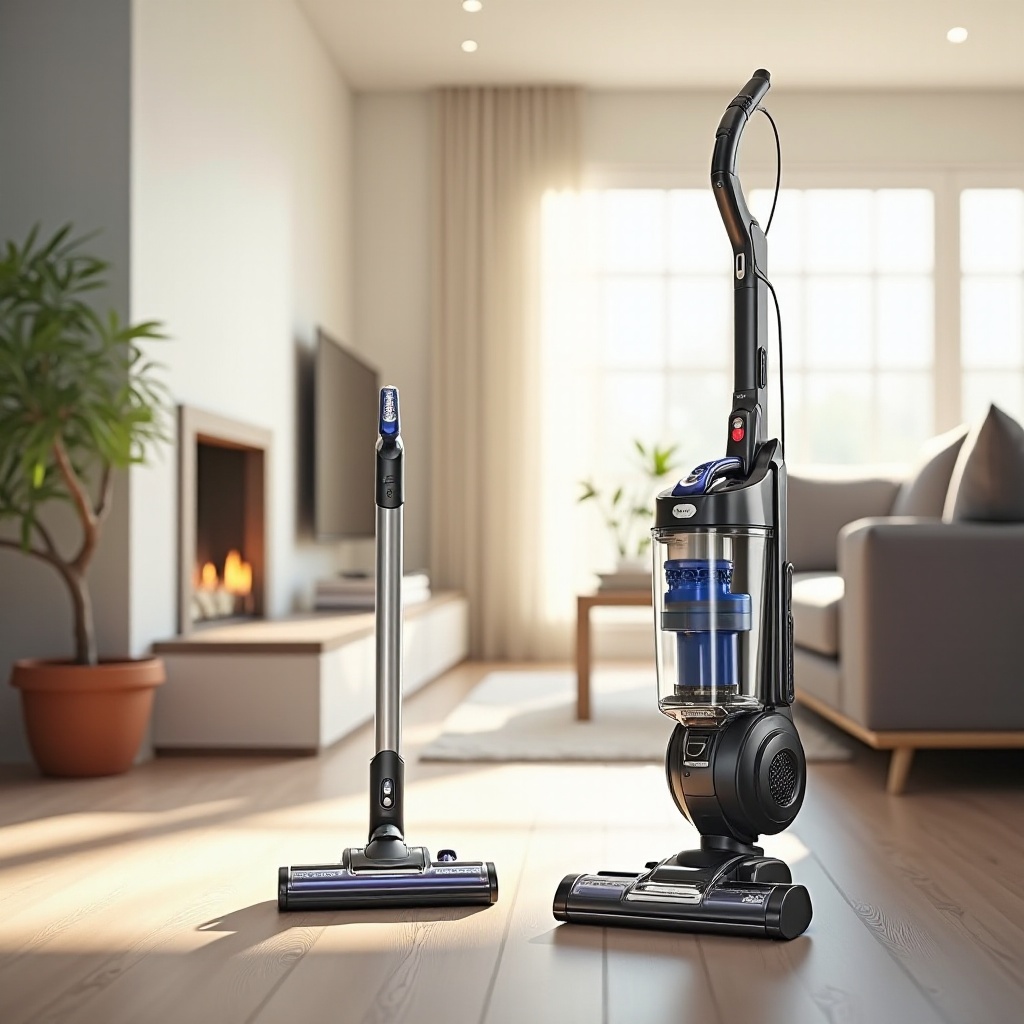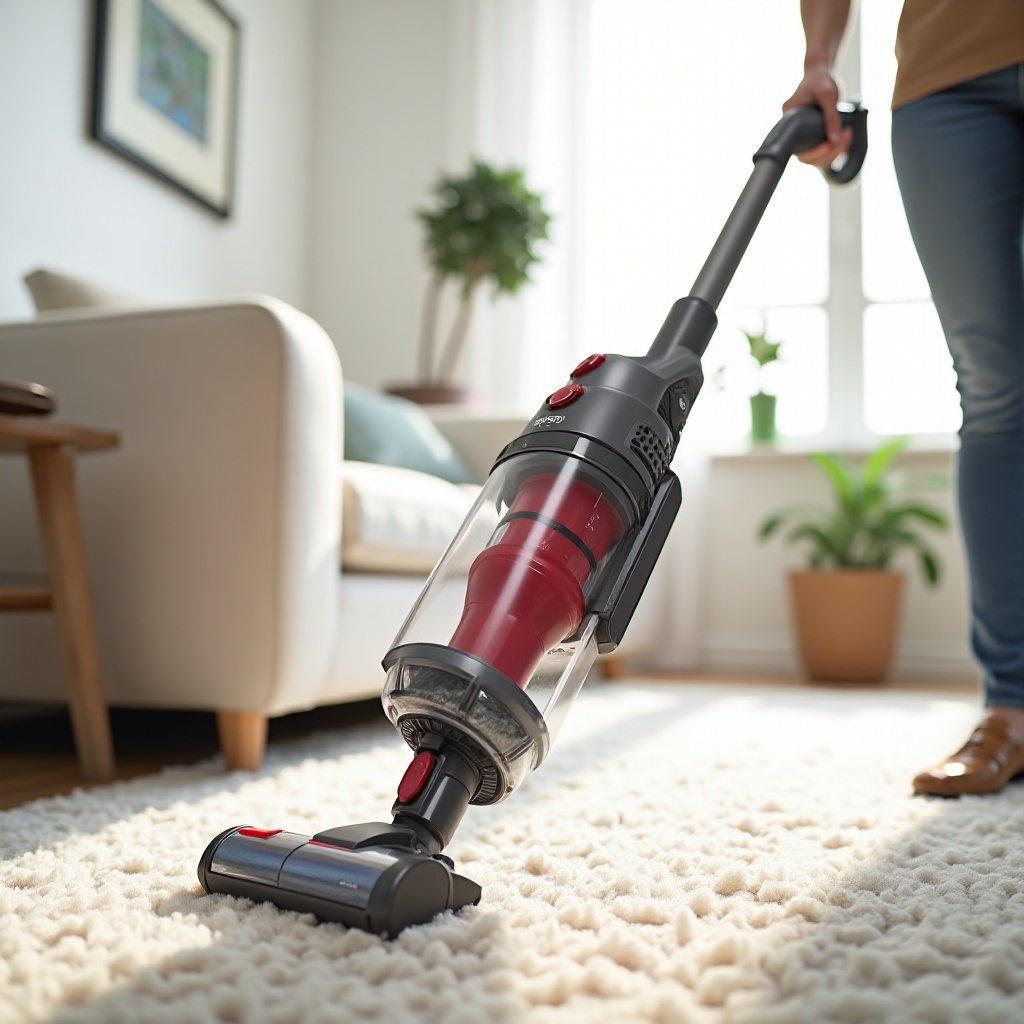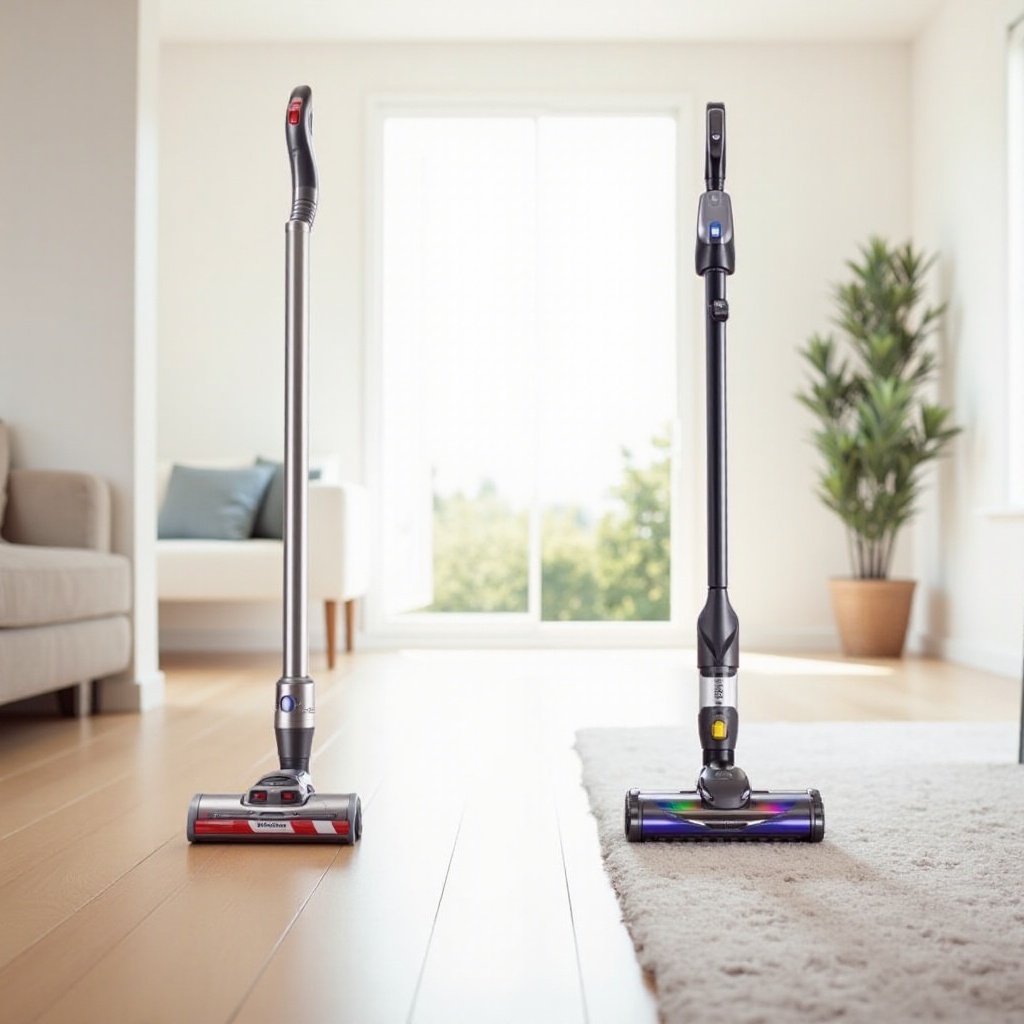Introduction
Choosing the right vacuum cleaner for your home is essential to maintaining a clean and healthy living space. With so many options on the market, it can be challenging to decide between a stick vacuum and an upright vacuum. Each type of vacuum has its unique features, advantages, and disadvantages, making some more suitable for certain homes than others. In this blog, we’ll break down the key differences between stick vacuums and upright vacuums and help you determine which one is the best fit for your needs in 2024.

Understanding Stick Vacuums
Stick vacuums have become increasingly popular due to their lightweight design and convenience. They offer a modern, minimalist solution for quick and easy cleaning.
Key Features
Stick vacuums are known for their slim design, making them easy to store and great for tight spaces. They usually feature detachable handheld units, which enhance their versatility for reaching difficult areas like stairs and car interiors. Rechargeable batteries are a common feature, providing cordless operation and mobility.
Pros and Cons
Pros:
– Lightweight and easy to maneuver
– Cordless options available for convenience
– Good for quick clean-ups and daily use
– Can be used as a handheld vacuum
Cons:
– Shorter battery life compared to corded models
– Smaller dustbin capacity
– Generally less powerful than upright vacuums
Best Use Cases
Stick vacuums are ideal for smaller homes or apartments where storage space is limited. They excel at quick clean-ups, handling spills and daily dust with ease. Their versatility also makes them perfect for cleaning stairs, upholstery, and vehicles.
Understanding Upright Vacuums
Upright vacuums are the traditional choice for many households. Known for their powerful cleaning capabilities, they are built to handle extensive cleaning tasks.
Key Features
Upright vacuums typically come with larger dustbins and robust suction power. Many models offer multiple cleaning modes, height adjustments for different floor types, and a variety of attachments for specialized cleaning. Most upright vacuums are corded, offering extended usage without worrying about battery life.
Pros and Cons
Pros:
– Powerful suction and deep cleaning
– Larger dustbin capacity
– Effective on all floor types
– Often includes various attachments for versatility
Cons:
– Heavier and bulkier than stick vacuums
– Generally noisier
– Requires storage space
– Can be challenging to maneuver
Best Use Cases
Upright vacuums are best suited for larger homes with extensive carpeting or mixed flooring. They are perfect for deep cleaning sessions and handling heavy debris. Homes with pets or high foot traffic can benefit from the powerful suction and larger capacity.

Cleaning Performance Comparison
When choosing between a stick vacuum and an upright vacuum, cleaning performance is a key factor to consider.
Suction Power
Upright vacuums typically offer stronger suction power, making them more effective for deep cleaning carpets and large areas. Stick vacuums, while improving in recent years, generally provide less suction but are sufficient for daily maintenance and smaller tasks.
Versatility for Different Floor Types
Both stick and upright vacuums can handle various floor types, but upright vacuums often have more adjustable settings specifically for carpets, hardwood, and tiles. Stick vacuums, thanks to their lightweight nature, are easier to use on stairs and tight corners.
Edge Cleaning and Reach
Stick vacuums, with their detachable handheld units, excel at edge cleaning and reaching into tight spaces. Upright vacuums can struggle with edges and may require additional attachments to clean thoroughly.

Maneuverability and Ease of Use
Ease of use and maneuverability are significant considerations for everyday cleaning.
Weight and Portability
Stick vacuums are designed to be lightweight and portable, making them easy to carry around the house and store. Upright vacuums, while offering more power, are heavier and can be more cumbersome to move, especially up and down stairs.
Corded vs. Cordless Options
Stick vacuums often come in cordless models, providing freedom of movement and convenience. Upright vacuums usually have cords, offering consistent power but limiting mobility. Some newer upright models do offer cordless options, combining the best of both worlds.
User Experience and Ergonomics
Stick vacuums are designed with user comfort in mind, often featuring ergonomic handles and swivel steering. Upright vacuums can be more challenging to maneuver, especially in small spaces, but their larger capacity and power can outweigh the ergonomic disadvantages for some users.
Maintenance and Durability
Maintenance and long-term durability should not be overlooked when choosing a vacuum cleaner.
Filter Types and Maintenance Requirements
Most stick vacuums use HEPA filters, designed to trap fine dust and allergens. These filters typically need regular cleaning and occasional replacement. Upright vacuums often have more complex filter systems, which may include pre-motor and post-motor filters. Maintaining these properly can extend the vacuum’s life and efficiency.
Life Expectancy
Upright vacuums, due to their robust build and fewer battery concerns, often have a longer life expectancy than stick vacuums. However, high-quality stick vacuums with good maintenance can still serve for many years.
Common Issues and Repairs
Stick vacuums can face issues with battery life over time, while upright vacuums may need belt replacements or motor repairs. Both types require regular filter maintenance to ensure optimal performance.
Cost and Value
Finally, consider the cost and overall value of the vacuum cleaner.
Initial Purchase Price
Stick vacuums tend to be more affordable initially, with high-end models still costing less than many upright vacuums. Upright vacuums can be a larger upfront investment but provide substantial cleaning power.
Long-term Maintenance Costs
Stick vacuums may incur battery replacement costs over time. Upright vacuums, while fewer in part replacements, can have higher costs for repairs if issues arise. Regular filter replacements are necessary for both types.
Value for Money
Assessing value for money depends on your cleaning needs. If you require power and longevity, an upright vacuum might offer better value. For convenience and versatility, a stick vacuum could be a more prudent choice.
Conclusion
Choosing between a stick vacuum and an upright vacuum depends on your specific needs and home environment. Stick vacuums offer convenience, flexibility, and ease of use for quick and small-scale cleaning tasks. In contrast, upright vacuums provide powerful suction, larger capacity, and durability, ideal for extensive cleaning tasks.
By understanding the differences and assessing your cleaning needs, you can make an informed decision that ensures the cleanliness and comfort of your home.
Frequently Asked Questions
Which type of vacuum is better for pet hair?
Upright vacuums generally offer stronger suction and larger capacity, making them excellent for homes with pets. They often come with specialized attachments designed for pet hair removal. However, high-quality stick vacuums can also effectively handle pet hair, especially on hard floors and furniture.
Are stick vacuums less powerful than upright vacuums?
Yes, stick vacuums typically have less suction power compared to upright vacuums. Upright models are designed for heavy-duty cleaning and usually offer more robust motors and suction capabilities. Stick vacuums have improved over the years but still prioritize portability and convenience over raw power.
What should I consider when choosing between stick and upright vacuums?
Consider your home size, flooring types, storage space, and specific cleaning needs. If you have a large home with carpets and high traffic, an upright vacuum may be more suitable. For smaller homes or apartments with hard floors, a stick vacuum offers convenience and ease of use. Assessing these factors will help you choose the best vacuum for your household.
